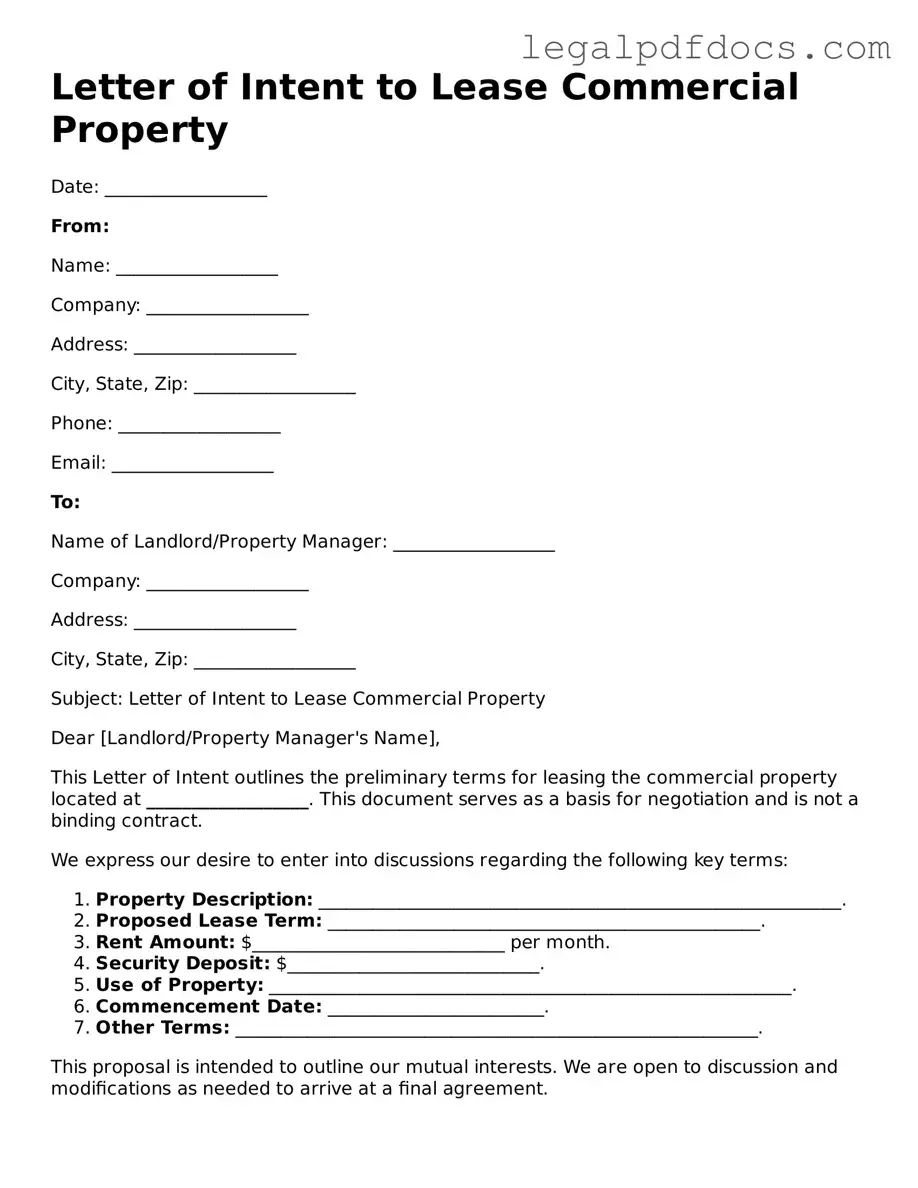Letter of Intent to Lease Commercial Property Template
The Letter of Intent to Lease Commercial Property is a preliminary document that outlines the basic terms and conditions of a proposed lease agreement between a landlord and a prospective tenant. This form serves as a starting point for negotiations and helps both parties clarify their intentions before entering into a formal lease. Understanding this document is essential for ensuring a smooth leasing process.
Ready to take the next step? Fill out the form by clicking the button below.
Open Letter of Intent to Lease Commercial Property Editor Here
